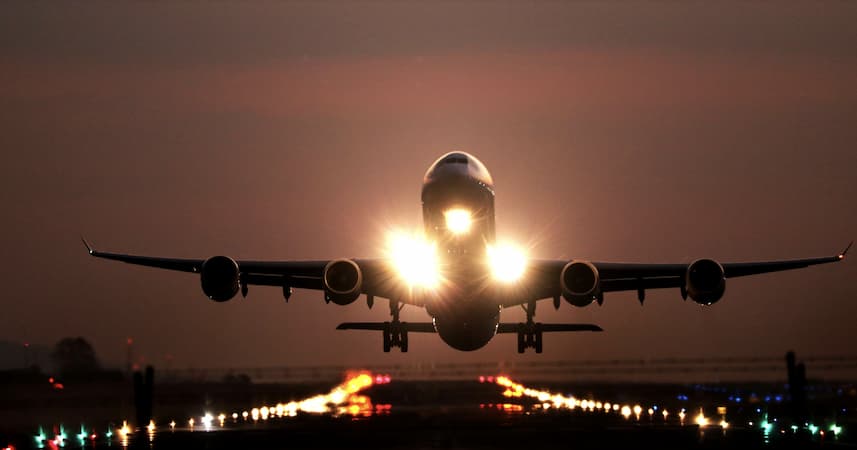The Lamphouse: Revolutionising Airway Lighting

General Airport Lighting
An airport beacon or aerodrome beacon has a large rotating light that is normally placed on top of a tall tower or pole. This ensures that it remains highly visible to incoming pilots that use it as a visual aid. It also aids in helping identify the airport, making it a safety check for pilots when navigating a nighttime flight.
Other airport buildings and towers will also be equipped with a steady, red light used to identify any obstructions whilst carving out a safe flight path for low-flying aircrafts.
Runway & Taxi Lights
After an aircraft has left the gate, the pilot has to navigate the plane to the runway point to get ready for takeoff. From within the terminal, passengers can see blue ground LED lights. These lights are particularly important in low light and bad weather conditions as they are used to demarcate the edges of the taxiway. This helps the pilot safely manoeuvre the aircraft to its takeoff position.
In recent years, the addition of Guard lights has been included to enhance runway safety. Guard lights are flashing lights mounted to either side of the taxiway indicating clearly where an aircraft must stop and await clearance from the air traffic control.
In addition to these lights are illuminated taxiway signs, signifying and identifying a crossing taxiway or to indicate the start of a runway.
Runway status lights, also known as Red Stop Bar lights are another recent addition, they are another safety effort to reduce runway collisions and have been implemented at airports worldwide.
Landing Lights
We’ve all driven past airports and seen those tall-looking electricity pylon poles near the runways, these rows of lights make up the elevated Approach Lighting System. This lighting system is an instrument used when approaching and landing on an airstrip. Although there are different variations to the system, the use and purpose remain the same: provide pilots with the necessary visual queue to properly align and land during bad weather.
The two highest-risk points of any flight are the takeoff and landing, making these lighting aids paramount to the safety of the pilot, passengers and airport.
Why LEDs are the light bulb of choice in the aviation industry:
LEDs are placed as the forerunner of energy-efficient lighting systems, outweighing their competitors. This technology offers value to airports looking for energy savings, lower maintenance costs and higher performance from airport infrastructure.
Various applications. LEDs can be used in taxiway and runway lights, touchdown and approach lights, imbedded or elevated, steady or flashing, whatever the use or need, there is an LED light solution that The Lamphouse can provide.
Environmentally Friendly. Unlike CFL (compact fluorescent) and fluorescents, LEDs run at a cooler temperature in comparison to halogen lamps. In addition, LED lamps have no filament, making them more robust and mercury-free. This offers a better choice for the health and safety of both your maintenance team and the environment.
Energy Efficient. 70% less electricity is used when compared to conventional lighting, with the same luminance output, lending huge opportunity for energy savings.
Longer Lifespan. Where conventional and CFL bulbs give an estimated 1, 000 to 10, 000 hours, LED lamps are giving fives times that lifespan at 50, 000 hours.
More than one hundred and thirty years ago Thomas Edison gave us the incandescent light bulb but technology has since advanced. The advent of the LED lighting system is now the future. Contact us to help make the transition to LEDs for your airport runways, helping you increase the safety of your pilots and passengers while at the same time reducing your operational expenses.